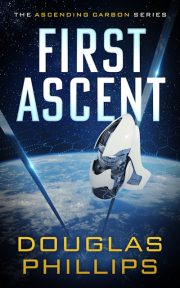Playtesting Narrative Content in Board Games
by Will McDermott
Editor’s note: This piece is part of our Playtesting Game Narratives series, curated by SFWA’s Game Writing Committee.
Writing narrative content for board games is different from any other writing I’ve ever done. It’s even different than writing for video games or role-playing games. The reason is simple: length.
Novel and short story authors have plenty of space to tell a story. Even flash fiction generally gives you 500 to 1,000 words to work with. But board games provide at most 100 words per story beat—more often than not, you get fewer than 20 words to create an emotional impact.
It all comes down to space. Most board game narrative is presented on cards, which are ubiquitous game components. Sure, murder mystery and escape room games usually include booklets with everything from character bios to full scenes to read to players. Even these booklets must be concise, however, because paper, printing, and space in the box are the most expensive pieces of a game. You get a couple of paragraphs per story beat at most. Outside of murder mystery boxes, most storytelling games present their narratives via cards, which hold, at most, 50 words.
I’m not going to delve into how to write short here. That’s a topic for another article. But short pieces of game narrative present unique challenges when playtesting, and those challenges affect how the writer approaches content creation.
Board Game Playtesting Basics
The first thing to understand is that board game playtesting focuses on two main aspects: player engagement and players’ understanding of the game mechanics. Basically, did the players enjoy playing the game, and did they play the game correctly?
Designers will ask playtesters questions such as:
- “What did you like about the game?”
- “What didn’t you like?”
- “Were the rules clear?”
- “Did you have any problems figuring out how to play?”
- “Was there anything that wasn’t clear or you didn’t understand?”
A variation on advice I always give to new fiction writers applies here as well: If you get one playtester who has trouble with a specific game mechanic, that may be an anomaly you can ignore. If five or ten playtesters all mention the same problem, it’s time to look at either changing that mechanic or describing it better in the rules.
Playtesting Narrative Content
When it comes to playtesting narrative content, game designers still think in terms of mechanics. First and foremost, they want to know if the players are engaging with the content.
Daniel Stoltenberg, an independent inventor who worked on Funko Games’ Party Hack Heist Night and Ouija Manor games, says, “It’s a good sign when a player refers to a narrative element of their own volition, the same way it’s a good sign when they remember and utilize a game mechanic.” Daniel also notes that some game players will always see narrative content as “optional fluff” and ignore it, so it’s important to understand playtester expectations.
Ruby Wishnietsky, a freelance game editor who worked at Funko Games on The Goonies: Never Say Die and Jurassic World: The Legacy of Isla Nublar, says that when she was playtesting narrative content, she “liked to focus first on tone and mood setting. Is it supposed to make us comfortable…or ramp up the tension?” She added, “Focus on the feelings you intended the story to evoke and observe if those are being experienced by the players.”
When asked about typical issues that players face with narrative content, both Daniel and Ruby mentioned length and complexity as the major ones. Daniel says, “Players respond best to concise, punchy writing that gets where it needs to go quickly.” He says that playtester confusion is a sign that “narrative content isn’t accomplishing its goal.”
Ruby also notes that “players have far less patience for reading a story that doesn’t impact their play,” and that long narrative passages can create an unintentional expectation that the story impacts game mechanics. Ruby says, “I’ve seen players latch on to story language and feel like it should affect their play when it isn’t intended to.”
For example, using the term “Red Alert” in the narrative of a space game that has a “Red Alert” mechanic could make players expect the mechanic to occur in every game. Similarly, marking text intended to be read aloud as “Secret Intel” would be confusing in an espionage game.
Board Game Narrative Writing Tips
What should an aspiring board game writer take from these playtest experiences? First and foremost, get clear input from the designer about the length, voice, tone, and function they’re looking for from the narrative.
Second, request to read the rules and play early versions of the game if at all possible. This will help you understand the mechanics of the game and how your narrative will interact with gameplay. Plus, reading the rules will cue you into any terminology the designer has already assigned to game mechanics before you begin writing.
Knowing the game’s terminology helps you use those terms intentionally when you want to emphasize a connection between narrative and mechanics. This also allows you to avoid game terms when the story is just that—narrative that moves the tale along without directly impacting gameplay.
Ruby advises: “Providing a list of component names, game terms, and even the draft rulebook can help writers be sensitive to using language that might adversely overlap with the mechanics.”
One final point comes from my own personal experience. When faced with strict constraints on passage length, I try to view those restrictions as challenges instead of a straitjacket. How can I make this point in 100 words—or 50? How can I elicit an emotion or tone with only 20 words? Writing short forces me to use the strongest nouns and verbs at all times, which gives your writing a stronger punch.
In the end, probably the biggest difference between game writing and fiction writing is that the game writer’s first priority must be the needs of the game. As Daniel puts it, game designers and game writers must “adjust the narrative content to better serve the experience.”
 Will McDermott turned a love of science fiction and games into a writing career. He has published nine novels, 27 short stories, and helped create innumerous worlds, characters, and stories for card, board, and video games. His fiction is often set in gaming universes, including Magic: The Gathering, Warhammer 40K, Renegade Legion Universe, and Mage Wars. Will also has written content for many board games, including War with the Evil Power Master, The Goonies: Never Say Die, Avatar, The Last Airbender: Crossroads of Destiny, Ouija Manor, and Party Hack: Heist Night. Check out willmcdermott.com for more info.
Will McDermott turned a love of science fiction and games into a writing career. He has published nine novels, 27 short stories, and helped create innumerous worlds, characters, and stories for card, board, and video games. His fiction is often set in gaming universes, including Magic: The Gathering, Warhammer 40K, Renegade Legion Universe, and Mage Wars. Will also has written content for many board games, including War with the Evil Power Master, The Goonies: Never Say Die, Avatar, The Last Airbender: Crossroads of Destiny, Ouija Manor, and Party Hack: Heist Night. Check out willmcdermott.com for more info.



